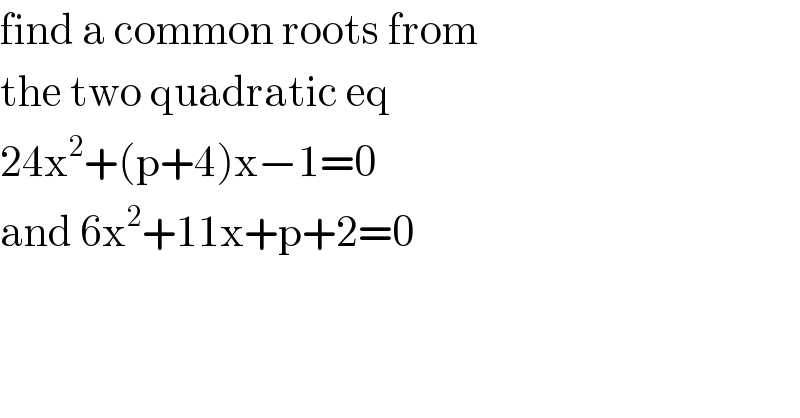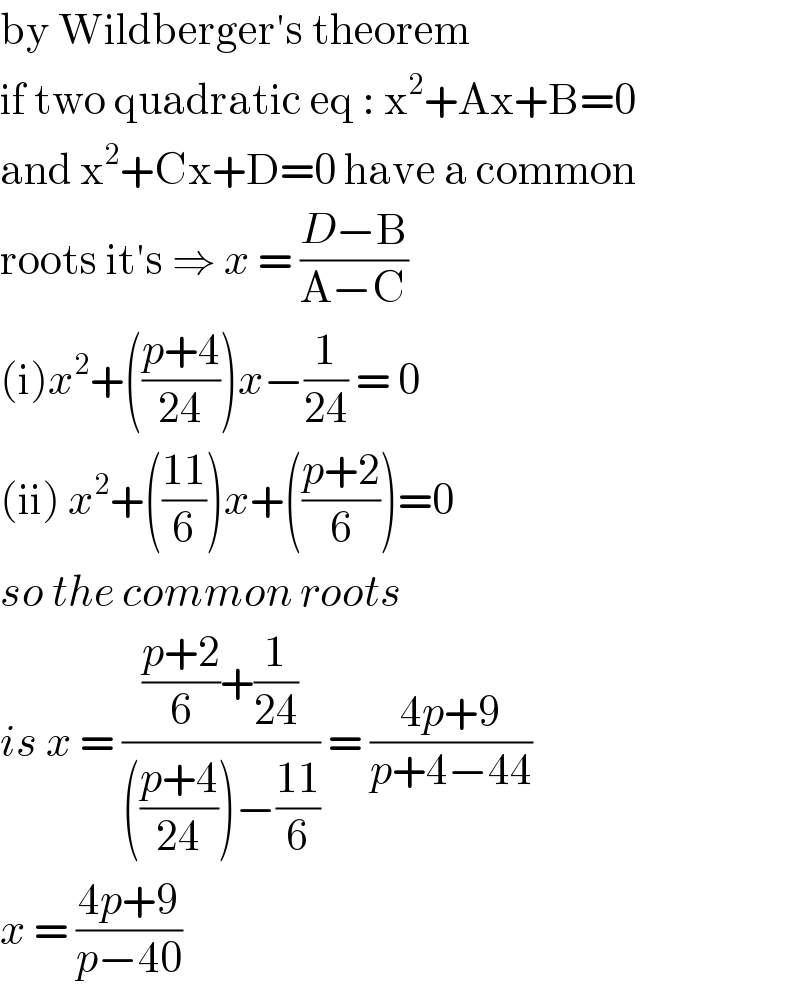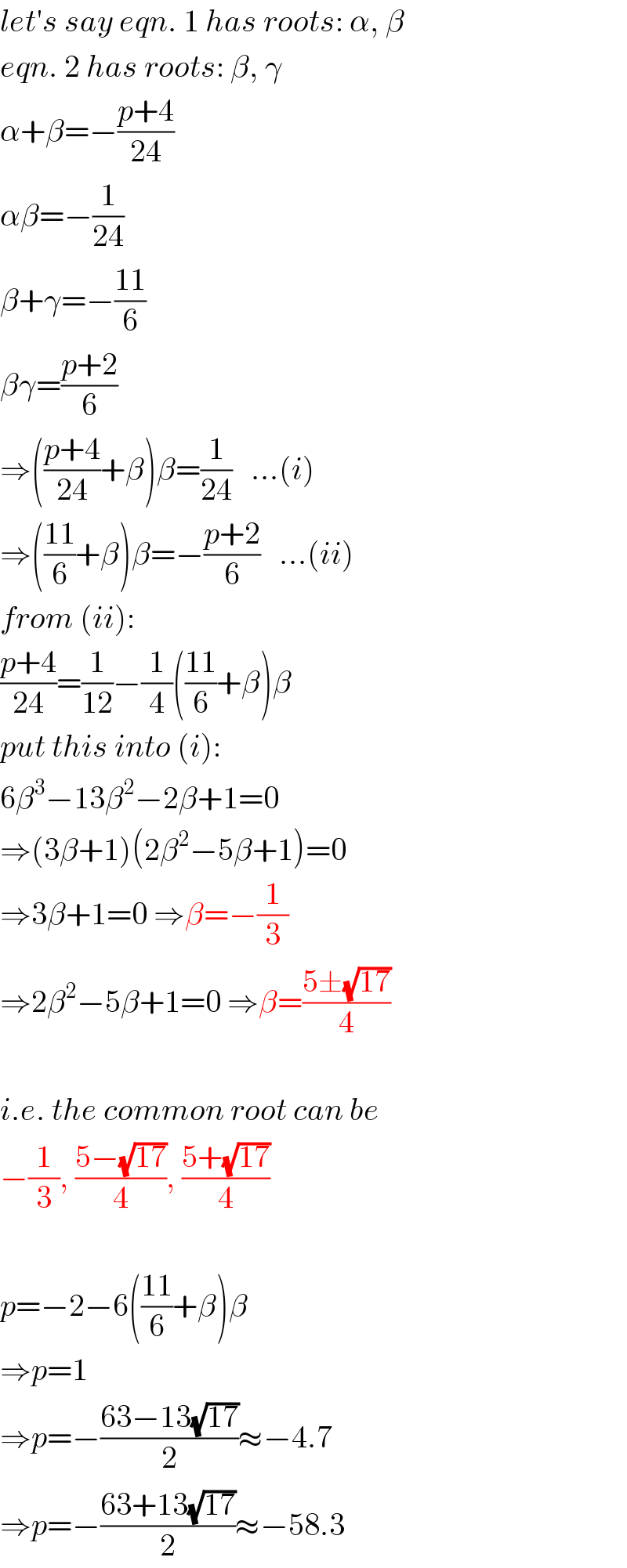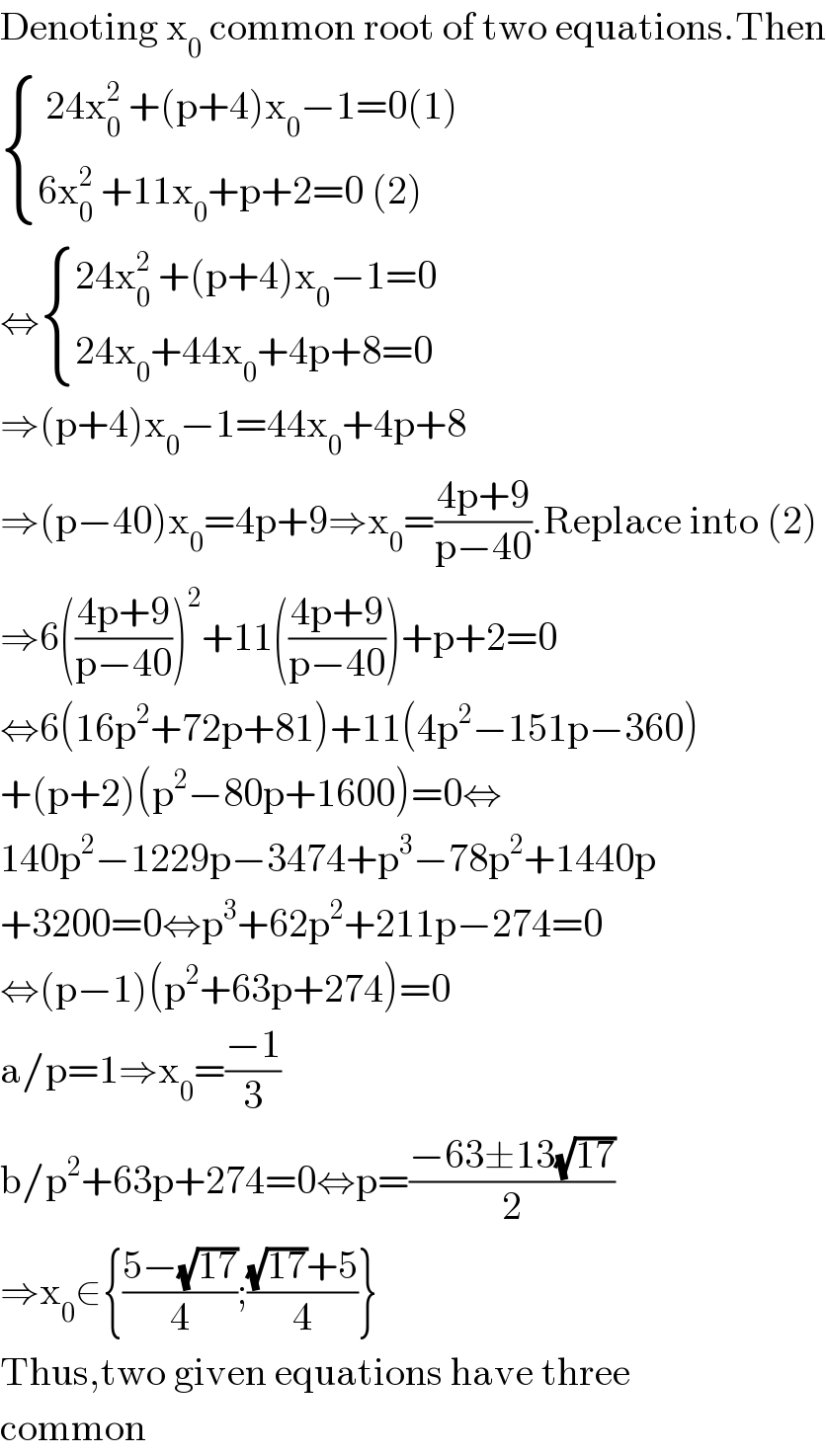
Question and Answers Forum
Question Number 96189 by bemath last updated on 30/May/20

Answered by john santu last updated on 30/May/20

Commented by bemath last updated on 30/May/20
wow ... I just found out the theorem mister
Commented by mr W last updated on 30/May/20

Commented by john santu last updated on 30/May/20
Yes, right
Answered by mr W last updated on 30/May/20

Answered by 1549442205 last updated on 30/May/20

